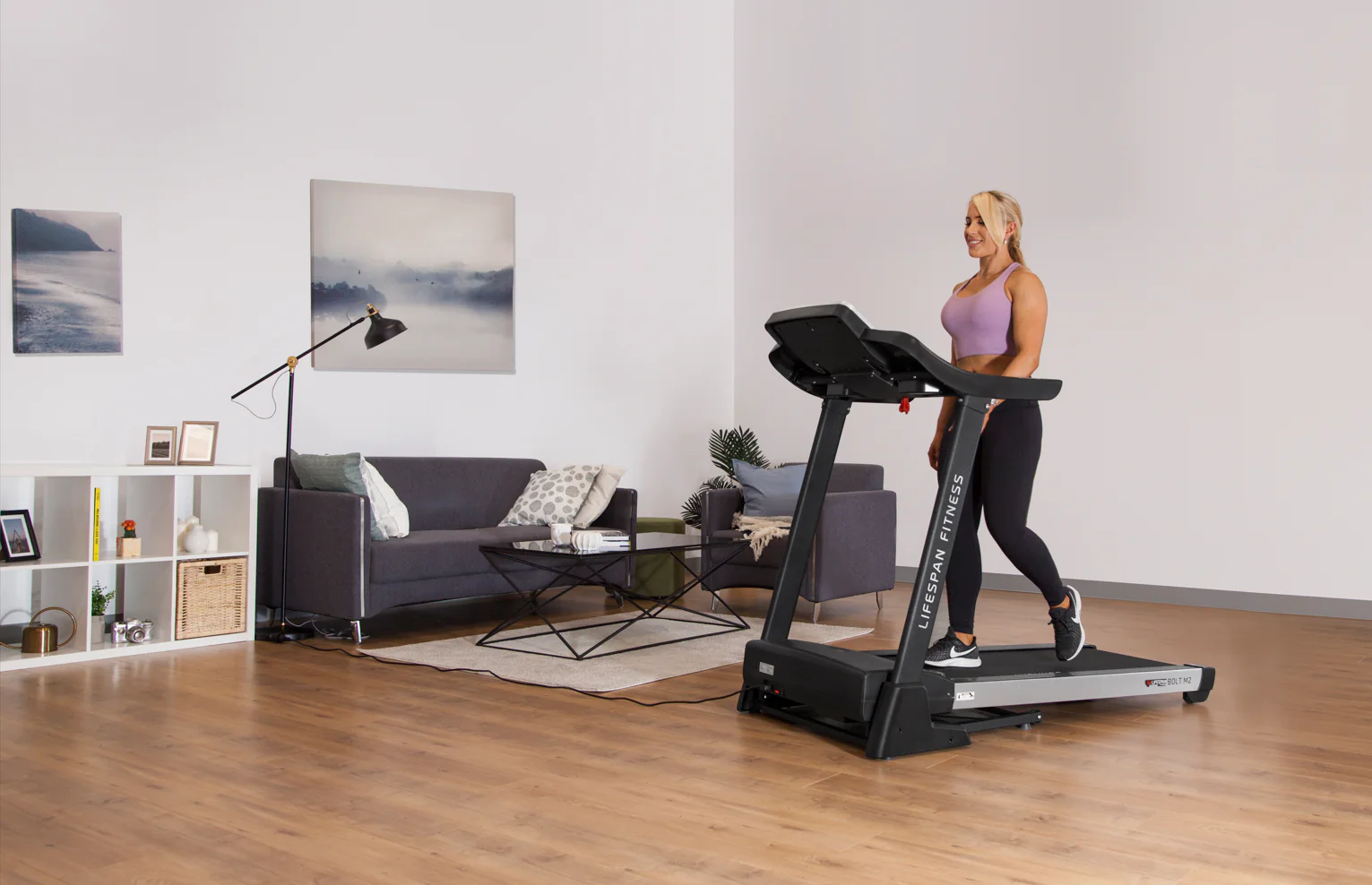Treadmills do not suit all situations uniformly. There are two distinct categories: commercial treadmills tailored for gym settings and home treadmills intended for personal use. Whether you prioritise durability akin to professional standards or seek convenience in a home setting, treadmills offer diverse options to accommodate various fitness objectives.
Commercial Treadmill
You’ll get to see commercial or gym treadmills in fitness centres and gyms. They can handle lots of use and tough workouts. They have strong motors, usually between 3 to 5 horsepower, for steady performance. The running area is bigger, so it fits people of different sizes. These treadmills have fancy features like incline and decline settings, customisable workout programs, and good shock absorption. All of these help to protect your joints.
Home Treadmill
Home treadmills are made for personal use at home. They’re smaller and lighter than commercial ones. They usually have motors with 1.5 to 3 horsepower, good for moderate workouts. The running area might be smaller to fit individual users. Home treadmills offer features like adjustable speeds, preset workout programs. They lack all the fancy features that a commercial treadmill offers.
Commercial and Home Treadmills: Key Differences
Listed below are the key differences between commercial and home treadmills:
Durability and Usage:
- Commercial: Built for heavy use, often lasting for years in gyms with constant running. They can handle multiple users per day and have a higher weight capacity.
- Home: These are designed for personal use, typically lasting for a few weekly workouts. They have a lower weight capacity and might not be suitable for intense running routines.
Construction and Features:
- Commercial: These treadmills are built tough for serious runners. They feature heavier frames for stability, larger motors for higher speeds and longer runs, and wider running belts for a more comfortable stride. They have advanced features like heart rate monitors, pre-set workout programs, and touchscreens.
- Home: These treadmills have lighter frames, smaller motors for lower speeds, shorter runs, and narrower running belts. Features can vary but may include basic displays, heart rate tracking, and limited workout programs. Some higher-end home treadmills offer features closer to commercial models.
Size and Storage:
- Commercial: These are large and bulky, not designed to be moved often. They typically don’t have wheels or folding mechanisms.
- Home: More compact and often foldable for easier storage. Some have wheels for portability within your home.
Cost:
- Commercial: Significantly more expensive due to their heavy-duty construction and features.
- Home: Wider range of prices depending on features and quality. Generally more affordable than commercial models.
Winding Up
Ultimately, your best treadmill depends on your needs and budget. If you run a lot every day, a commercial treadmill might be good for you. But if you just walk or jog a few times a week, a high-quality home treadmill could be perfect.
Just ensure you are wearing appropriate running or gym shoes regardless of the treadmill you select. These shoes offer essential cushioning, support, and traction for safety during your workouts.
